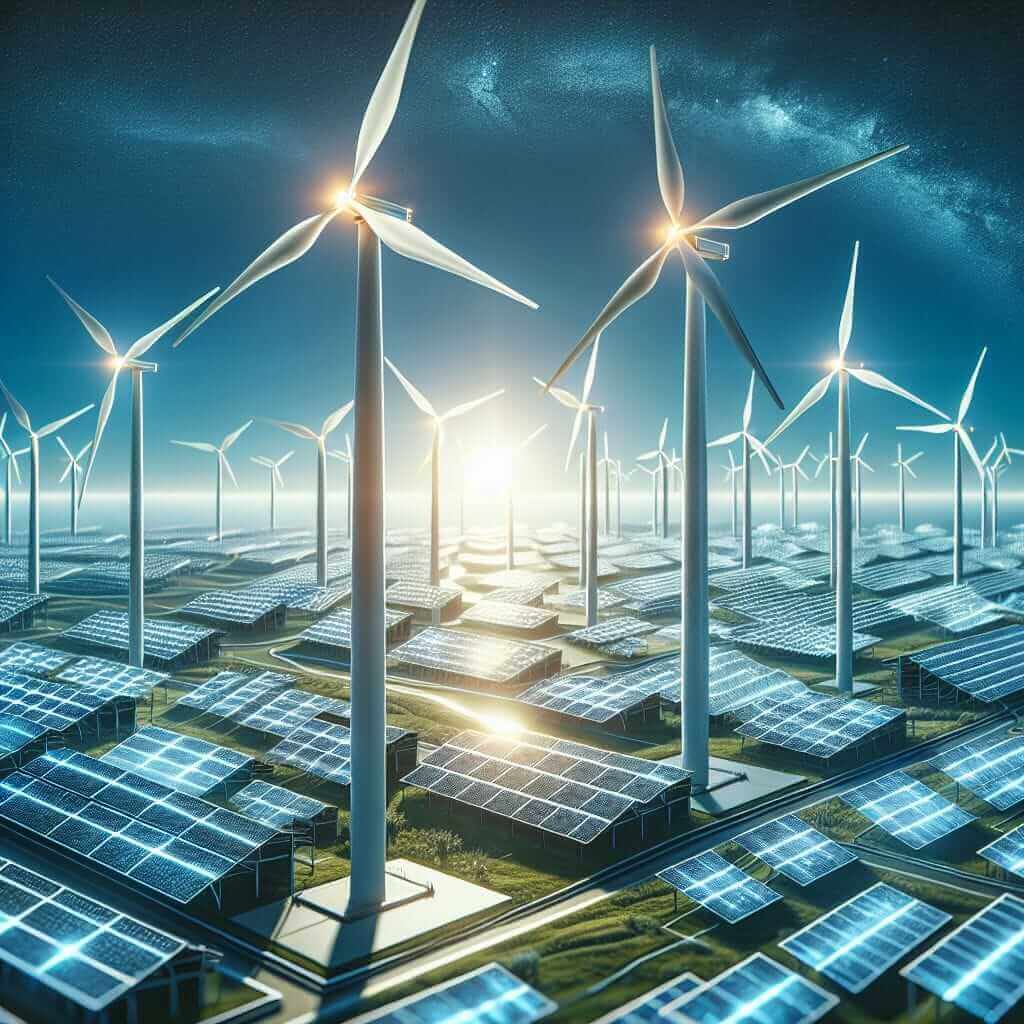The IELTS Reading section is designed to test a range of reading skills, including your ability to understand the main idea, identify supporting details, and recognize writers’ opinions and purposes. One of the recurring themes in IELTS Reading passages is climate change and the technological solutions developed to address it. Given its relevance and frequency in past exams, it’s a highly probable topic for future exams as well.
In this article, we will explore “Technological solutions to climate change” and provide a comprehensive IELTS Reading practice test based on this theme. We will create a complete reading passage, followed by a series of questions and detailed answers. This practice will help you familiarize yourself with the format and improve your reading skills.
Reading Passage: Technological Solutions to Climate Change
Technological Solutions to Climate Change: Innovations and Impacts
The looming threat of climate change has driven scientists and innovators to develop and deploy various technological solutions aimed at mitigating its effects. These innovations range from renewable energy technologies to carbon capture and storage (CCS) systems, each playing a crucial role in combating global warming.
Renewable Energy Technologies
One of the most prominent technological solutions to climate change is the development and expansion of renewable energy sources. Solar, wind, and hydroelectric power are becoming more prevalent as they offer clean and sustainable alternatives to fossil fuels. The advancements in photovoltaic cells have increased the efficiency and affordability of solar panels, making solar energy a viable option for reducing carbon emissions. Wind turbines have also seen significant improvements in design and capacity, contributing to a substantial increase in wind energy production globally.
Carbon Capture and Storage (CCS)
Another critical technological advancement is carbon capture and storage (CCS), which involves capturing carbon dioxide emissions from industrial sources and storing them underground to prevent their release into the atmosphere. CCS technologies have the potential to significantly reduce greenhouse gas emissions from power plants and factories. Research in this field is ongoing, with various pilot projects demonstrating the feasibility and effectiveness of CCS on a larger scale.
Energy Efficiency Improvements
Improving energy efficiency in buildings, transportation, and industries is another vital approach to addressing climate change. Advanced materials, smart grids, and energy-efficient appliances are some of the innovations helping to reduce energy consumption and greenhouse gas emissions. The integration of Internet of Things (IoT) technology has also enabled better energy management, allowing for real-time monitoring and optimization of energy use.
Electric and Hydrogen Vehicles
The transportation sector is another major contributor to greenhouse gas emissions, and technological innovations are pivotal in transforming this sector. Electric vehicles (EVs) are gaining popularity due to advancements in battery technology, which have improved their range and reduced costs. In addition, hydrogen fuel cells offer a promising alternative for zero-emission vehicles, with several companies investing in the development and deployment of hydrogen-powered cars and trucks.
Geoengineering Solutions
Geoengineering, the deliberate intervention in the Earth’s climate system, has also been proposed as a means to combat climate change. Techniques such as solar radiation management (SRM) aim to reflect a portion of sunlight back into space to cool the planet. While these methods are still in the experimental stage, they hold potential as supplementary measures alongside emission reduction strategies.
Conclusion
The fight against climate change requires a multifaceted approach, incorporating various technological innovations to reduce greenhouse gas emissions and adapt to changing environmental conditions. Continued investment and research in these technologies are essential for achieving a sustainable and resilient future.
 Renewable Energy Distribution
Renewable Energy Distribution
IELTS Reading Questions: Technological Solutions to Climate Change
Questions 1-5
Do the following statements agree with the information given in the passage?
Write True, False, or Not Given in boxes 1-5 on your answer sheet.
- Solar energy is currently the most affordable clean energy source.
- CCS can only be used in coal-fired power plants.
- IoT technology has minimized energy waste in the transportation sector.
- Electric vehicles have become less popular due to high battery costs.
- Geoengineering techniques are already widely implemented.
Questions 6-10
Match each technological solution (A-E) with the correct description (6-10). Write the correct letter, A-E, in boxes 6-10 on your answer sheet.
A. Renewable Energy Technologies
B. Carbon Capture and Storage (CCS)
C. Energy Efficiency Improvements
D. Electric and Hydrogen Vehicles
E. Geoengineering Solutions
- A method to store captured carbon emissions underground.
- Innovations that enhance building, industrial, and transportation energy use.
- Dependent on advancements in battery technology.
- Aims to reduce the amount of sunlight reaching the Earth’s surface.
- Includes solar, wind, and hydroelectric power sources.
Questions 11-13
Complete the summary below. Choose NO MORE THAN TWO WORDS from the passage for each answer. Write your answers in boxes 11-13 on your answer sheet.
One of the main technological solutions to climate change is the use of renewable energy sources such as (11), (12), and (13). These sources offer sustainable alternatives to fossil fuels and help to reduce carbon emissions.
Answer Key and Explanations
Answers: True/False/Not Given
- False – While solar energy is becoming more affordable, it is not stated as the most affordable clean energy source.
- False – The passage states that CCS can be applied to various industrial sources, not just coal-fired power plants.
- Not Given – The passage mentions IoT technology in general energy management but does not specify its impact on the transportation sector.
- False – Electric vehicles are gaining popularity due to advancements in battery technology.
- False – Geoengineering techniques are still in the experimental stage.
Answers: Matching Information
- B – Carbon Capture and Storage (CCS)
- C – Energy Efficiency Improvements
- D – Electric and Hydrogen Vehicles
- E – Geoengineering Solutions
- A – Renewable Energy Technologies
Answers: Summary Completion
- solar
- wind
- hydroelectric
Common Mistakes to Avoid
- Misreading the Question: Ensure you understand what the question is asking before you begin searching for answers.
- Skimming Too Quickly: While skimming is important, don’t rush through the passage. Make sure you have a good understanding of the main ideas.
- Ignoring Keywords: Pay attention to keywords in the questions and locate them in the passage.
- Assuming Information: Do not rely on your own knowledge; base your answers solely on the information provided in the passage.
Vocabulary for the Passage
- Mitigating (v.): /ˈmɪtɪˌɡeɪtɪŋ/ – make less severe or serious.
- Carbon Capture and Storage (n.): Techniques to capture and store carbon dioxide emissions from industrial processes.
- Geoengineering (n.): The deliberate large-scale intervention in the Earth’s natural systems to counteract climate change.
- Sustainable (adj.): /səˈsteɪnəbl/ – able to be maintained at a certain rate or level.
- Photovoltaic (adj.): /ˌfoʊtoʊˈvɒlteɪk/ – relating to the conversion of light into electricity.
Grammar Focus: Passive Voice
The passage contains several instances of the passive voice, especially when discussing technologies and their impacts. For example:
- “These innovations are becoming more prevalent…”
- “Advancements in photovoltaic cells have been developed…”
- “CCS technologies have the potential to significantly reduce…”
Passive Voice Structure:
- Form: [Subject] + [form of ‘to be’] + [past participle] + [by agent] (optional)
- Example: “The project was completed by the team.”
Tips for Improving IELTS Reading Score
- Practice Regularly: Regular practice with a variety of texts will improve your reading speed and comprehension.
- Expand Your Vocabulary: A broad vocabulary will help you understand more complex texts.
- Use Time Wisely: Allocate your time effectively during practice and on test day.
- Read Instructions Carefully: Understand the question types and follow the instructions exactly.
Continued practice and familiarity with common themes, such as “Technological solutions to climate change,” will enhance your ability to perform well in the IELTS Reading section.
For further reading and practice on related topics, you can visit these links:
- Technological Innovations in Renewable Energy Distribution
- Effects of Climate Change on Water Systems
- Effects of Climate Change on Energy Systems
By integrating these resources into your study regimen, you’ll be better prepared to tackle diverse topics in the IELTS Reading section. Good luck!


